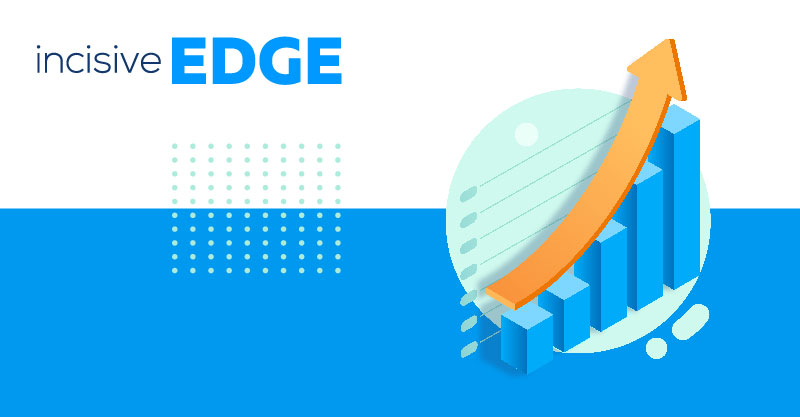It’s a fact that inbound marketing places its emphasis on earned and owned media, rather than paid.
Earned media, put simply, is word-of-mouth media. You get earned media through positive reviews, social shares, mentions in the press and more. Great earned media is the recognition of your hard work and contribution to your industry, and as a result, is extremely valuable and rewarding.
Owned media is any media that you directly control. This includes your website, blog, downloadable resources etc.
The diagram below shows how the three media types work together.
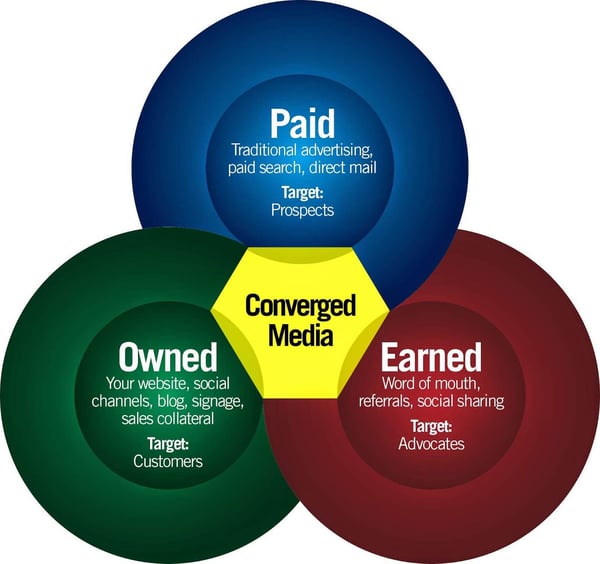
When creating content for owned media, you should try to avoid anything exclusively promotional. Instead, everything you produce should be engaging, customer-oriented and able to solve a problem.
No one is going to click on a blog post titled, “We’re Really Awesome. Read About How Fantastic We Are!” but they’ll probably be more open to checking out, “Here’s How Our FinTech Product Saved John £280 in Just One Month.” Because that’s not just saying you’re fantastic, it’s explaining why. It’s also putting a customer at the heart of the content, which makes it easier to relate to.

The idea is to create something valuable that really answers a reader’s needs. This usually means a piece of content that is both entertaining and educational and tailored to that individual’s pain points.
Despite this, paid media still has an important role to play in your marketing strategy.
A great FinTech marketer will be using all three to create a harmonious ecosystem, rather than trying to pick ‘the one’ for your FinTech business.
What is paid media?
Paid media is exactly what it says on the tin. It’s media exposure that you pay for.
As people began recognising the intrinsic potential that inbound marketing has, they started pumping out content at an astounding rate. The majority of it has no real value, and just adds to the ‘white noise’ of the web, but the sheer volume means that it’s easy for well-crafted and expertly researched content to get lost in the fray.
Where paid media can really shine in an inbound marketing strategy is in the targeted promotion of your brand, your content and other owned media properties. Just like the diagram above states, the target for paid media is people who may never have heard of your business or product before.
Many FinTech products are in the mainstream now and there’s technically no reason why you can’t use a traditional advertising medium to get your product in the public eye, though most of your paid media marketing will take place online.
Who’s using it?
The short answer: everybody.
Companies like Nutmeg have had a lot of success using static advertising in tubes on the London Underground.
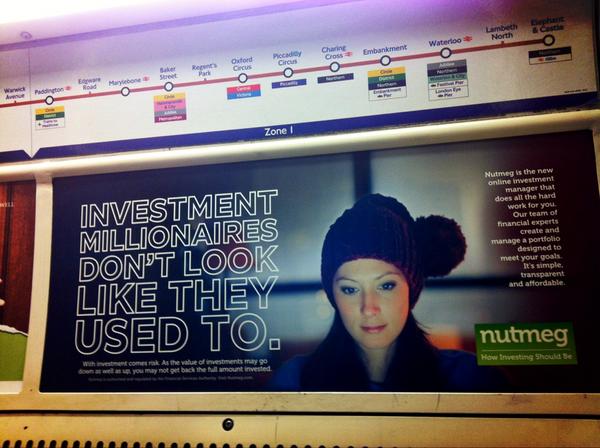
These adverts target Nutmeg’s key customer demographic; young professionals in the city. With a captive audience, thanks to the daily commute, Nutmeg have time to highlight what they’re all about on their posters.
Xero did the same with blanket advertising throughout Old Street Station in early 2016.
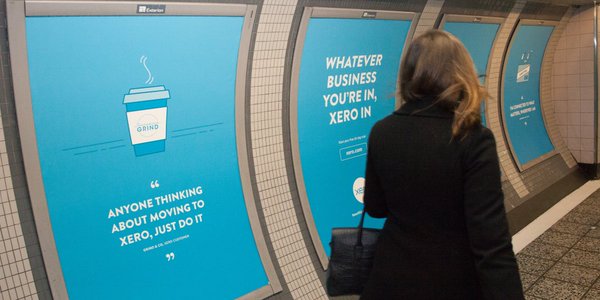
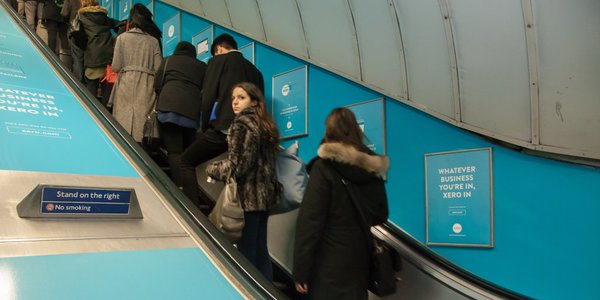
Prices for this kind of advertising are difficult to ascertain. The London Underground has a policy of never publicly posting prices because they vary so much. They’re higher in certain stations, on particular lines and of course are dependent on the number of adverts you want and how long you want them to stay up.
Estimates published online put the average campaign north of £20,000. As a company in scale-up, this might not be feasible for you at this stage.
We recommend concentrating on digital paid media like promoted social posts and other forms of native advertising.
In The Social Media Examiner’s Social Media Marketing Industry Report 2016, a survey revealed that 90% of marketers believe that social media marketing is important to their business. A pie chart of their findings is below.
“Social media marketing is important to my business”
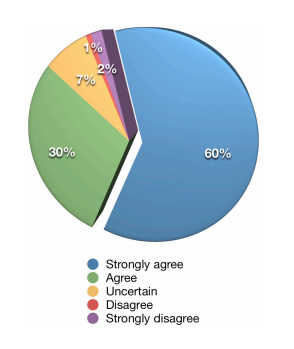
They also asked marketers to identify the benefits of social media marketing. As you can see, the majority identified increased exposure and traffic as the main benefits.
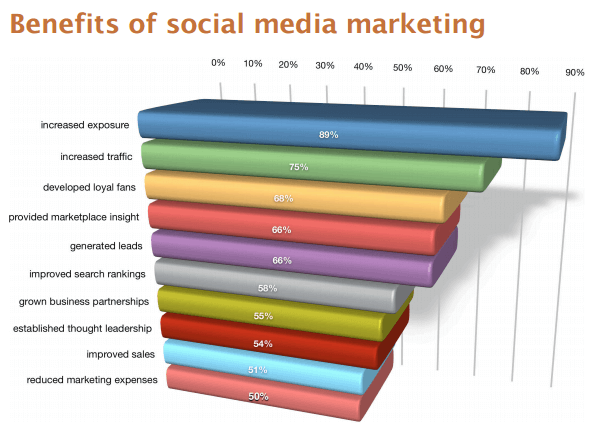
How much does it cost?
Your budget for social media marketing can be as little or as much as you want it to be. There are no strict rules but of course, the more you spend, the larger the number of people your content will be exposed to.
To get the biggest bang for your buck, you need to concentrate your efforts on the social channels that your target customer frequents the most.
You also need to consider the medium of your content. Yes, YouTube advertising is popular and generally very successful, but it might not be right for you if you don’t already create video content as part of your current marketing strategy.
Advertising on Instagram (which is the fastest growing network in the world), and now Snapchat too, is on the rise.
Snapchat in particular has some interesting ways of promoting products. Some companies will sponsor promotional Snapchat ‘filters.’ These filters are arguably the app’s most popular feature, and as a result, exposes a brand to millions of potential customers.
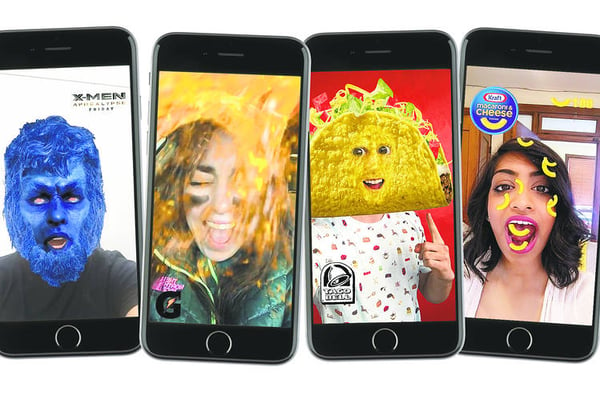
From left to right, the above examples are Snapchat filters from: the film X-Men Apocalypse, sports drink Gatorade, fast food restaurant Taco Bell, and the food company Kraft.
This kind of paid media is extraordinarily expensive (we’re talking hundreds of thousands here), but there are other options, so don’t be afraid to think out of the box!
If you wanted to reach the young user base of this platform, you could try creating a Snapchat geofilter for events. These are much cheaper (as little as $5) and are constrained to a single area (as small as 20,000 square feet).
Don’t automatically discount a channel just because you can’t do the most expensive option. Though these may reach millions of people, only a small percentage of these will actually be your ideal customers.
The most common paid media posts are on Facebook, Twitter and LinkedIn.
These appear as regular posts on your Facebook timeline and Twitter or LinkedIn feed, along with a small note that they are promoted or sponsored content.

Creating Facebook ads, promoting tweets and adding sponsored updates on LinkedIn is very simple and although it does cost money (of course), you can spend as little as you like. It is entirely dependent on how long you wish to run the post and how many people you want to see it.
The algorithms in place on social media platforms exist in part to keep businesses buying into their advertising.
Facebook is by far the biggest offender for this.
Even if a person has liked your page and opted in to see updates from you, there’s no guarantee that your post will end up on their news feed. At the start of January 2015, Facebook updated their algorithm to show fewer posts from pages, which has led some people to feel that Facebook is now a “pay-to-play” arena for businesses.
But it’s not all doom and gloom.
The main advantage of doing social media marketing is that you can narrow down the audience that your post will be shown to. There are some people that, for whatever reason, make a habit of liking pages for products they have no interest in.
With promotional posts, you’re guaranteed to be reaching more qualified potential customers.
You can show it to a specific gender, people from a certain location, people with relevant interests and much more. Because of this, you could for example target people who have liked things related to personal finance in the past, meaning they’re much more likely to be interested in you and your product.
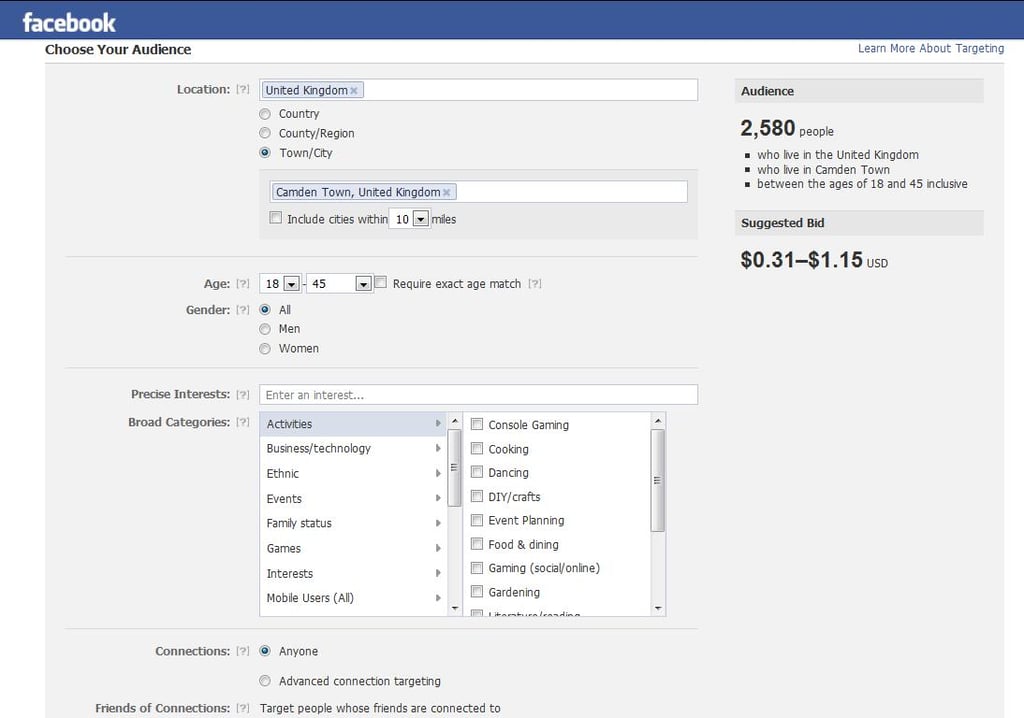
Use your buyer personas to work out which factors should be taken into account. If you don’t yet have buyer personas, this guide is ideal for helping you get started.
What should I post?
You can’t just post anything you like and expect to get a solid ROI.
It won’t matter that you spent £100 on a Facebook ad if it’s just a link to one of your blog posts and a “Read this!” tagline.
You have to tailor your posts to the platform and the audience and you still have to provide something that’s educational, entertaining and value-led.
For example, your paid LinkedIn posts should be informative content and updates about your business. Cat pictures and hashtags won’t fly there.
The best way to figure out which posts are going to perform the best as paid media, is to see what’s already doing well on your current social feeds and which blog posts get the most reads.
Check through your analytics and see what your audience are already engaging with. Perhaps they’re very receptive to posts that reference current events, have especially beautiful images or include infographics (always a popular choice).
It’s then just a case of creating something similar (or even promoting something you’ve already done to increase its reach) and putting it into an ad.
What about other native advertising?
The traditional form of native advertising is the advertorial. These are essentially adverts dressed as regular pieces of editorial content and are found in newspapers, magazines and on websites.
They’re much less overtly promotional (and therefore less off-putting) than plain adverts and usually try to offer some genuine value.
Check out the example below from John Barron Design:
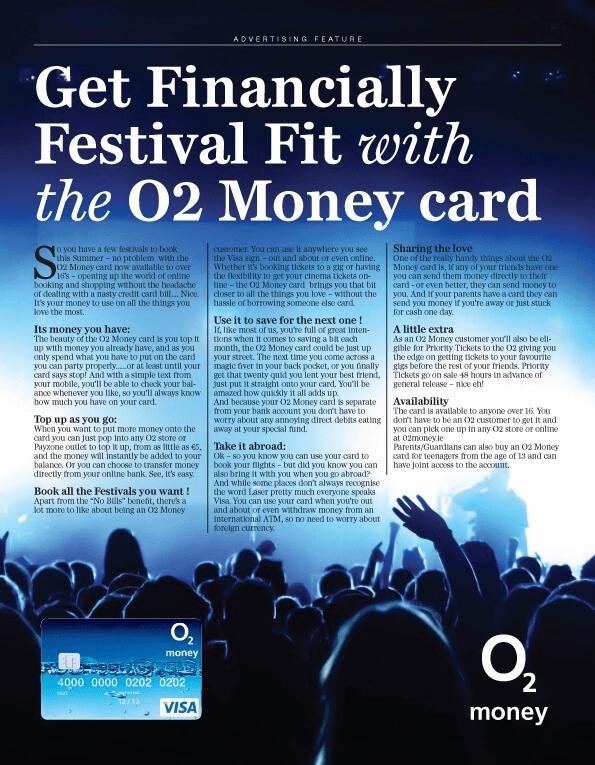
Buzzfeed are the kings of digital native advertising, and work with businesses to create something in the distinctive Buzzfeed voice that really engages their readers.
Another popular form of native advertising is sponsored posts on other blogs. For example, you could write a post about how your FinTech product helps people save money, and pay a blog that is focused on personal finances with a larger readership to post it on their site.
It’s certainly worth getting in contact with websites that have a high number of readers that match your target customers and seeing what they can offer in terms of native advertising.
Conclusion
Paid media is ideal for attracting new leads, but it’s not the be all and end all. You need a healthy balance of paid, owned and earned media to create a truly unstoppable marketing strategy.
Don’t feel pressured into spending more than you really want to on paid media. Start small and see what the results are before throwing yourself into a more complex campaign. Monitor everything you do and don’t be afraid to experiment! Occasionally, you’ll be surprised by what resonates with your potential FinTech customers.
If you want to create a bespoke marketing strategy including paid, earned and owned media, sign up for your mini or full, free marketing consultation. Just fill in the form on the side bar.








